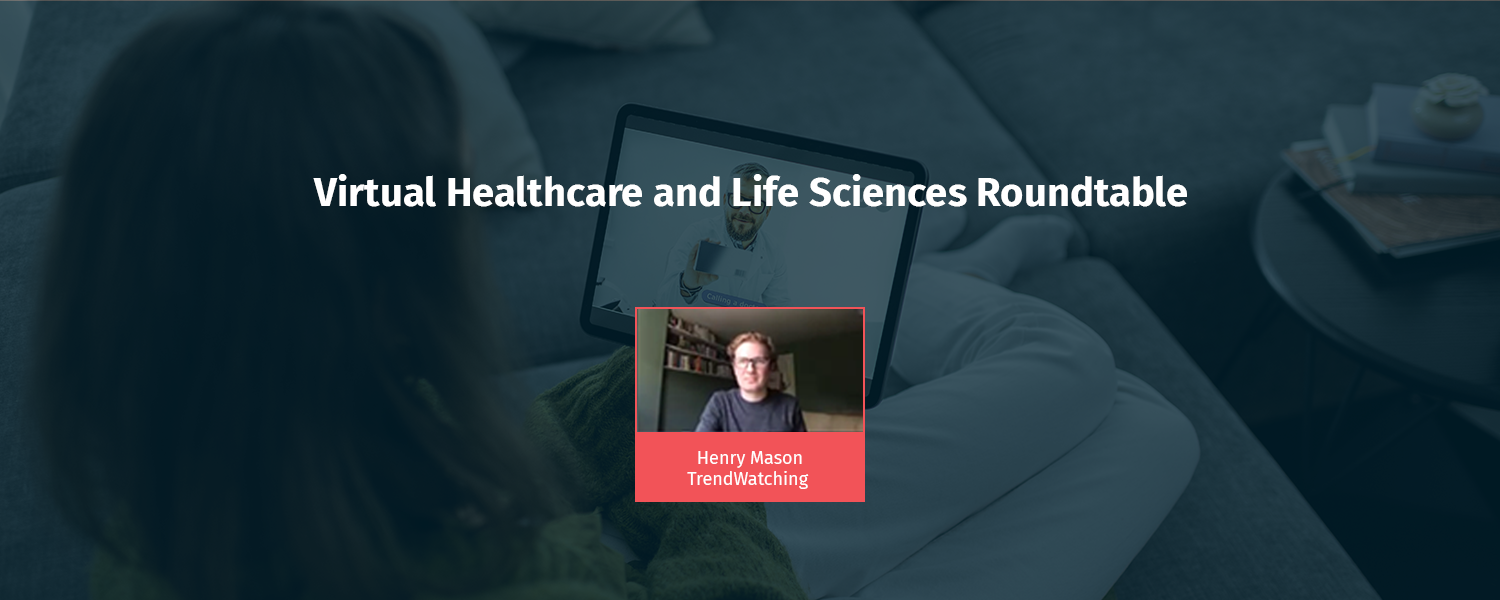“There are decades where nothing happens and there are weeks where decades happen.” – Vladimir Lenin
During our Virtual Healthcare and Life Sciences Insights Executives Roundtable, we heard from Henry Mason, Evangelist-at-Large at TrendWatching, who noted that every single business has been forced to pivot during these tumultuous times, and entire industries are being shaken up.
In healthcare, this means that telehealth appointments amongst providers are growing exponentially, alongside astonishing rates of digital transformation across all consumer behaviors.
And although things may feel very uncertain, Henry said, underneath it all, “we’re the same old humans with the same old human needs and wants.” We have the same desires for reliable, trustworthy information, to feel safe and secure, and to connect with friends and family in meaningful ways.
What happens when change bumps up against core human needs and creates tensions? Innovations resolve that tension and create new expectations.
Trends emerge as innovators address these basic human needs and wants in novel ways. This is how TrendWatching thinks about change, basic human needs and innovations.
We can reach practical, future-focused insights by looking at business innovations that are coming into the market today across all sectors. Let’s see it in action:
Health and well-being.
The global wellness economy is a USD 4.5 trillion market (October 2018). But consumers’ ideas of wellness might change post-COVID-19: for example, 77% of consumers in G7 countries say that they are washing their hands more frequently or for a longer period of time. (Kantar COVID-19 Barometer, March 2020).
With the importance of hygiene infiltrating every area of our lives, businesses across all sectors are making practical wellness easy by embedding health boosters into everyday surroundings or real-world objects. For example, one e-bike sharing company is launching self-cleaning handlebars.
A paint manufacturer in China is developing antivirus surface coating with nanotechnology particles. The Hilton hotel chain is partnering with Lysol and the Mayo Clinic to help design cleaning processes and procedures. These kinds of hygienic standards and experiences will become expected by consumers.
Status symbols
Status is a core driver of consumer behavior – even if it is much higher on Maslow’s hierarchy of needs than health and well-being. The experience economy has helped drive this trend, giving people the chance to share successful and attractive images of themselves on a beach in Southeast Asia or on an adventure tour in Peru.
Since COVID-19, those kinds of experiences are no longer possible, so the virtual experience economy has had to adapt. Digital experiences are becoming the new status currency, like, for example, epic events like Travis Scott’s virtual Fortnite concert that was attended by 12.3 million people.
In healthcare, virtual experiences can be applied to helping train volunteers and retired health professionals through VR, as is being done by the firm Virti in the UK.
Positive impact
It’s a basic human need and wants – but many people are realizing that today’s challenges are too complex and huge to overcome alone. The most inspirational organizations are open to collaborating on or even giving away, their solutions to our toughest problems.
Arçelik, for example, has designed a washing machine filter to help keep microplastics out of oceans. To encourage others to do the same, they open-sourced their filter patent and offered it to other washing machine manufacturers.
On the healthcare front, the Jack Ma Foundation published a Coronavirus prevention handbook for healthcare professionals around the world which was downloaded 1.4 million times within 24 hours.
Apple and Google are collaborating on contact tracing APIs and embedding Bluetooth technologies to enable contact tracking apps to communicate across operating systems.
There is so much amazing research, data and insights available in the healthcare and life sciences fields. Henry encouraged participants to examine consumer expectations that are set outside of their industries and consider how to apply powerful stories at the intersection of basic needs, drivers of change, and innovations.
